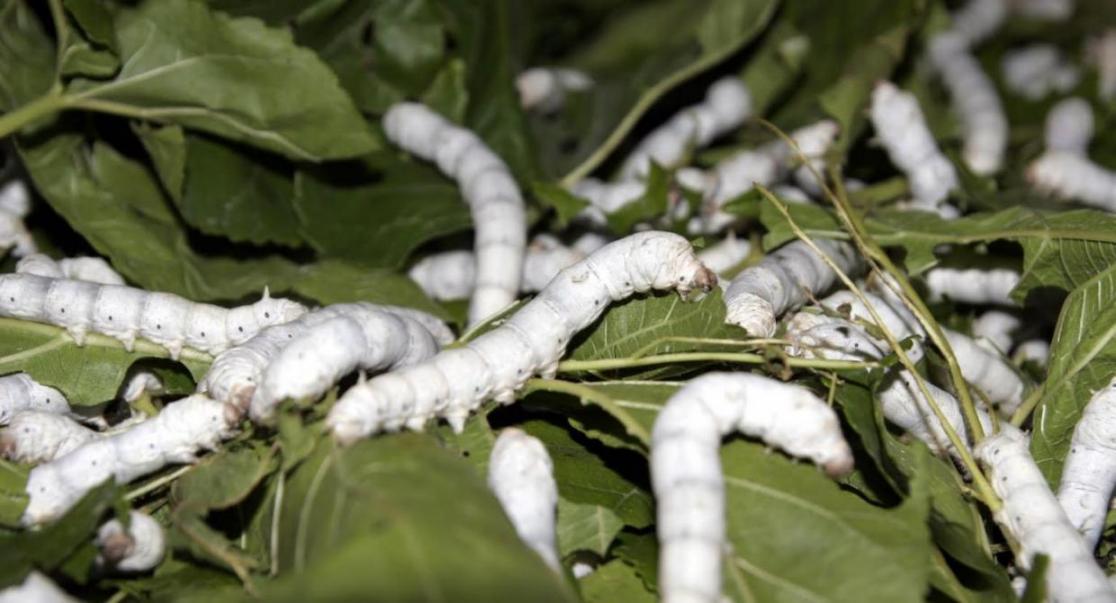Sericulture, or silk farming, is an important cottage industry adopted in many countries for production of raw silk through rearing of silkworm. The industry is particularly suitable for farmers and small land owners because of its low investment and short gestation period, creating an opportunity for rural families who earn their livelihood through agriculture to generate additional income in the off-season.
Silk, originally from China, has been known in Iran since ancient times as it was the most important article of trade between the two countries from the 4th century B.C. until around the 7th century A.D. via the famous Silk Road. But the cultivation of the silkworm only spread to Iran toward the end of the Sasanian period (around the 6th century A.D.)
Gilan and Mazandaran were the major silk producing regions during the first half of the 19th century due to the region’s suitability for mulberry tree plantation. Gilan’s production reached 1,000 tons in 1854 and 1864, the great part of which was exported to foreign countries. But this upsurge in silk production was interrupted by the ravages of pebrine – a disease of caterpillars – which appeared in Europe in 1845 and spread to Iran in the 1860s.
Today Gilan remains the principal region for sericulture, supplying about 50 percent of the national production, according to a report by Fars news agency, quoting head of Iran’s Sericulture Development Center, Ali Asghar Dadash-Pour. The Caspian provinces of Mazandaran and Golestan follow with 16-20 percent. In the rice producing provinces, sericulture is well integrated into the agricultural calendar at the end of spring – a stagnant period in the work of rice cultivation. The rest of production is divided among the mountainous regions of northern Iran (provinces of East and West Azerbaijan, North Khorasan and Razavi Khorasan) and a few oases in central Iran (Isfahan and Yazd).
The cycle of raising silkworms lasts about 35 days, beginning at the outset of the Iranian month of Ordibehesht (April 21-May 21), when the first mulberry leaves appear. Sericulture can be practiced even in a small land area with a few mulberry trees. Women, the elderly and even children can participate in the process of silk production, including mulberry harvesting, silk worm rearing and harvesting the cocoons.
Department of sericulture purchases the silk cocoons as per prescribed rates and quality from the farmers. Weight of single cocoon is approximately 1.5 to 2 gram from which 1000 - 1200 meters of thread can be produced.
Vanishing Industry
Even though sericulture is viewed as an economic activity that can create substantial employment and increase productivity especially in rural areas, the practice is vanishing from many villages due mainly to lack of training for the villagers and use of traditional, inefficient methods, according to an article in the Persian economic newspaper, Donya-e Eghetsad.
Silkworm farmers in Iran still follow old cultivation methods with age-old and low-yielding mulberry varieties. Furthermore, they are not aware of the prophylactic measures to prevent and control mulberry and silkworm diseases.
Silk Production
Iran was ranked by the Food and Agricultural Organization of United Nations as the fifth top cocoon producing country in 2005, with China and India leading the production. Iran is currently the tenth silk producing country in the world, according to deputy agricultural minister for livestock production, Hassan Rokni, in an interview with Fars news agency. He added that development in silk production can lead to growth in other industries such as textile and clothing.
Iran is self-sufficient in silk worm production, which means it does not need to import silkworm eggs. Efforts by the ministry of agricultural jihad and relevant departments in recent years have focused on controlling larvae diseases and improving efficiency through distribution of silkworm eggs among farmers. About 30-37 kilograms of fresh cocoons is yielded from one box of silkworm eggs.
The country also has suitable climate for mulberry production. According to Rokni, Iran currently has about 15,000 hectares of mulberry plantation. The provincial agricultural departments have provided farmers with improved mulberry saplings for plantation in their gardens and fields. Experts believe that vast capacity exists in the country for developing sericulture and expanding the downstream industries for silk production.


